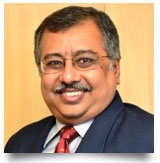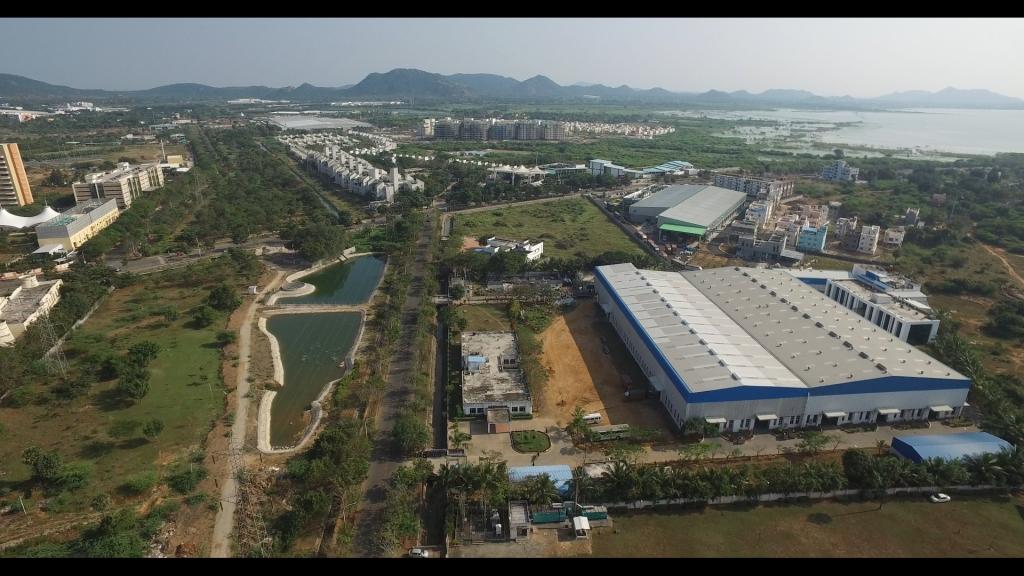Imagine an Indian city of the future. Do you see sufficient space for residents, clean, well-aligned streets, pedestrians in designated walking areas, disciplined traffic, planned housing for all economic classes, adequate high quality facilities for education, entertainment and culture, abundant sources of livelihood, medical facilities for all and people having the opportunity to give expression to their creativity? Do you see green environs, air that is safe to breathe, clean water bodies, absence of mounds of waste and well-maintained infrastructure? Do you see tech-enabled, comfortable public transportation, real-time information systems for citizens, responsive governance, urban farming and disaster-resilient urban areas? All of which exists in many parts of the world today.
Or do you see a dystopian future in the form of crowded spaces, potholed streets, people in hovels, polluted air, shortage of water, traffic jams, jumble of overhead wires, dirty rivers, plastic in seas, people and vehicles moving randomly on streets, structures standing uncomfortably close to each other, over-stretched public transport, struggle for livelihood, harried citizens, over-utilised spaces, dilapidated buildings, random floods, landfills catching fire, public servants who are either inaccessible or exploit the general public and so on. You get the picture.
India has a young and rapidly growing population — a potential demographic dividend. But India needs thriving cities if that dividend is to pay out. We already know that India will experience very high levels of urbanisation. This means that the population of many towns will more than double or triple. According to the World Population Prospects 2017, 33% of the Indian population is urban at present, i.e., over 440 million people live in urban areas of India. A McKinsey Global Institute 2016 report estimates that this figure will be about 41% by 2030, when the country will have some 598 million urban residents. Four large states—Gujarat, Kerala, Maharashtra, and Tamil Nadu—will be more than 60% urbanised by then. That means the need for housing, roads, hospitals and basic amenities like water and energy will increase sharply.
An earlier McKinsey report (2010), states that 70-80% of India, of 2030 is yet to be built. It estimates that rapid urbanisation in the country will require the construction of 700 to 900 million square meters of commercial and residential space. A World Economic Forum report says that in five years starting 2017, the Indian government plans to build 83,677 kilometres (km) of roads by spending a staggering Rs. 7 lakh crore ($108 billion). This is the largest-ever outlay for road construction in India and the length of the proposed roads is more than twice the Earth’s circumference (around 40,000 km). On the healthcare front a recent study by consultancy PricewaterhouseCoopers (PwC), states the Indian healthcare delivery system will need to add 3.6 million beds, three million doctors and six million nurses over the next 20 years.
When it comes to water, the ever increasing need is no different. A recent report from the government think tank, NITI Aayog, says that 21 Indian cities–including Delhi, Bengaluru, Chennai and Hyderabad–will run out of groundwater by 2020, affecting 100 million people and 40% of India’s population will have no access to drinking water by 2030. The government also estimates that India’s electricity consumption will increase four times from about 1.1 trillion units to 4 trillion units by 2030. A four times jump.
All of this can come up in the same higgledy piggledy manner that it usually does or we can plan for the next 50 years, mark out areas that will remain almost as chaotic as it is now because it is almost impossible to rewire the space, designate areas where new developments will happen and plan them using all the urban development wisdom that has accumulated over the years and leverage the possibilities that new technology will make possible. Despite all the actions being taken the possibility of a dystopian future seems more plausible today than the more aspirational one described in the first paragraph. However, it is fair to get an understanding of the bold actions being taken currently. More about that later….
 Anirban Ghosh is the Chief Sustainability Officer at the Mahindra Group. He has been working with Group in Sales, Marketing, and Strategy since 1999 and has been recognised as a distinguished CSO in his current role. A gold medal-winning engineer from Jadavpur University, Calcutta, Ghosh has pursued doctoral studies in Marketing Management at IIM Ahmedabad. He enjoys music, reading, travelling, driving, cricket and tennis. He is an active public speaker and has represented the nation at the Festival of India across multiple nations.
Anirban Ghosh is the Chief Sustainability Officer at the Mahindra Group. He has been working with Group in Sales, Marketing, and Strategy since 1999 and has been recognised as a distinguished CSO in his current role. A gold medal-winning engineer from Jadavpur University, Calcutta, Ghosh has pursued doctoral studies in Marketing Management at IIM Ahmedabad. He enjoys music, reading, travelling, driving, cricket and tennis. He is an active public speaker and has represented the nation at the Festival of India across multiple nations.
Views of the author are personal and do not necessarily represent the website’s views.
Thank you for reading the story until the very end. We appreciate the time you have given us. In addition, your thoughts and inputs will genuinely make a difference to us. Please do drop in a line and help us do better.
Regards,
The CSR Journal Team

